
|

|

|
|||||||

|
In 1880 Matthew John Whittall built a mill in Worcester on Southbridge Street for the manufacture of fine carpets and rugs. The Whittall family lived at their city residence until building a great white Georgian summer estate in 1912. For this home Charles A. Kably, a realtor of Worcester, sold Mr. Whittall 100 acres of land on top of Meetinghouse Hill in Shrewsbury, which had consisted of seven separately-owned pieces of property. Juniper Hall, as Mr. Whittall named his Shrewsbury estate, became a All the rooms in the two-story house were large, especially those on the Gardening was a particular hobby of Mr. and Mrs.Whittall. Juniper Hall In the summer of 1922, Vice-president Calvin Coolidge visited Juniper Hall. In 1927, this white landmark framed in trees was deeded by Mrs. Whittall to the Grand Lodge of Masons of Massachusetts. It was her wish that the house be used for the relief of suffering, in memory of her husband who had died there in 1922 and who had been a 33rd-degree Mason. The structure became known to many in Shrewsbury and the area as the Masonic Hospital. The estate was bought by the town of Shrewsbury in 1976 and the building was later razed. The mansion is gone now and so are the memories of different times; but the land remains and it is an enchanting world still. In place of formal gardens, there is wilderness with a hushed beauty of its own. Juniper Hall is now a memory, but the image of persists in its hollow on the summit. THE NORCROSS BROTHERS -"MASTER BUILDERS" Builders of the Shrewsbury Home of Matthew J. Whittall James and Orlando Norcross, started Norcross Brothers Construction Company, of Worcester, Massachusetts, and became one of the first general contractor companies in the nation. The number of buildings attributed to the Norcross Construction Company is extensive. The brothers worked extremely well between the construction of the building and the understanding of the architect's needs and designs. They earned their title of "Master Builder" because of their intelligence, ingenuity, personality and common sense. They also worked for some of the most influential architects of the time, namely Henry Hobson Richardson, Peabody and Stearns, McKim, Mead & White and Shepley, Rutan and Coolidge (successors to H. H. Richardson). The brothers filed many construction patents in their name (i.e. concrete columns, concrete slab flooring, partitions, etc.) most of these still in use in the construction world today. The Norcross family originated from the state of Maine and moved to Salem, Massachusetts around 1843. Both James and Orlando were born in Maine - James Atkinson Norcross was born in Kennebec, Maine in 1831 and Orlando Whitney Norcross born in Clinton, Maine in 1839. Their parents were Jesse Springer Norcross and Margaret Whitney Norcross. Jesse Norcross, a carpenter who worked in all different aspects of the building trade, shifted his base of business from Maine to Salem, Massachusetts to establish a more lucrative location for his work. James and Orlando soon established their own general contracting business in Swampscott. They later transferred their base of business in 1866 to Worcester, Massachusetts after being engaged to build the Worcester High School (which is no longer standing) and Leicester Congregational Church. The Norcross Brothers Construction Company remained in Worcester for the rest of its career. After successful completion of their first commissions in Worcester, the Norcross Brothers became linked in a nearly continuous and highly profitable association with the architect of the Worcester High School, Henry Hobson Richardson. H.H. Richardson became one of the most influential American architects of the late 19th century. After linking up with H. H. Richardson, the Norcross Brothers Construction Company proceeded to build almost all of Richardson's major commissions. Some of these building are: The Trinity Church, Boston, MA Refer to the Norcross binder to see the "Partial Listing" of buildings built by the Norcross Brothers Construction Company Courtesy of PRESERVATION WORCESTER, Cedar Street, Worcester, MA. The Norcross Brothers built the own homes at the corners of Claremont and Woodland Streets (both of their homes currently house the facilities of Clark University's Center for Technology, Environment and Development). Except for a very few minor changes, mostly exterior, the two Norcross homes are mirror images of each other. Orlando's home was located at 16 Claremont Street and James' home was located at 18 Claremont Street. James Norcross attended to all the office responsibilities and duties. He was a very conservative, detailed man, self-educated and a brilliant thinker. Orlando Norcross possessed a strong spirit, served during the Civil War and learned well the carpentry and building trade. The brothers also found it to their benefit to purchase and maintain their own quarries to produce the stone used for their buildings - sandstone, limestone and marble. James retired from the business in 1897. James had also built the impressive residence "Fairlawn", on May Street, Worcester, which he occupied in July of 1895. Orlando continued the business alone. With the deaths of these two incredible men, James died in 1903 and Orlando died on his way to work at the age of 80 in 1920, Norcross Brothers Construction Company was to suffer and eventually cease to exist. Noted for their quality masonry, craftsmanship, honesty, integrity and organization, the Norcross brothers made extremely important contributions to the contracting business. They made huge advances in the architectural and commercial history of their era, both independently and through their association with the great architects of their day. The Norcross brothers continue to live on through the huge advances and innovations they developed and through the many structures that to this day still dot the United States. **************************** WHAT CONNECTION TO THEY HAVE WITH These fabulous, creative and hugely successful builders built the home known as Juniper Hall for Mr. Matthew J. Whittall on Prospect Street, here in Shrewsbury. The brothers having working connections to Matthew Whittall were a probable first choice. (The brothers had worked on the Whittall Mills and built St. Matthew's Episcopal Church, in Worcester - Mr. Whittall being a charter member and generous financer of the church). Orlando Norcross was obviously approached by Mr. Whittall to construct his new home on its 70+ acre location in Shrewsbury. The lovely and majestic home was built by Norcross Construction Company for a cost of EIGHTY THOUAND DOLLARS ($80,000.00) in 1912. It served as the home for Matthew and Gertrude Whittall for several years. On the fifth anniversary of Matthew Whittall's death, Gertrude deeded the property over the the Grand Lodge of the Masons of Massachusetts for use as a retirement/ convalesce home. The property later became known in the town as the Masonic Home/Hospital. In 1976 the property fell under the ownership of the Town of Shrewsbury and then in 1979 the town made the decision to demolish this home. SUCH A GREAT HISTORICAL LOSS TO THE TOWN OF SHREWSBURY WHEN YOU THINK OF THE CONNECTIONS! Thanks to: MATTHEW J. WHITTALL Matthew J. Whittall was a British immigrant who made his fortune in the carpet making business. He was born in Kidderminster, England, on March 10, 1843. After his education, he relocated to a town called Stourport. There, at the age of 21, Matthew took charge of a carpet works company owned by Thomas B. Worth. Mr. Worth was a well known manufacturer of carpets. In this position, Matthew learned about the business and he remained with the company for about six years. In October of 1868, Matthew married Ellen, youngest daughter of the late Henry Paget, in Stourport, England. Mr. Whittall and his family came to the United States in 1871 and he took a position as a superintendent at the Compton Carpet Company, in Worcester. In 1879, the Compton Company was dissolved. Mr. Whittall was then determined to try his hand at manufacturing. He leased a building in South Worcester (then known as the Wicks Mill) and began to manufacture on his own. He visited is native home in England to purchase the necessary machinery for his plant. Matthew purchased machinery that would enable him to manufacture Wilton and Brussels carpets. In England, he purchased twelve looms. About three years later, with business booming, Mr.Whittall bought land and erected his first carpet mill. For about ten years after his first building, Matthew continued to expand adding new buildings on a periodic basis until his company covered nearly 200,000 square feet of land. He eventually, Edgeworth mill for the manufacturer of worsted yarns in 1885 and also purchased the Palmer Carpet Company in 1892. The mills in 1910 employed about 1500 skilled laborers and the mills were running about 350 carpet and rug looms. He was a caring employer and also held events such as minstrel shows and field days for employees. The Whittall Mills was one of the largest employers in South Worcester and remained in business until the late 1950's. It also became one of the largest individual carpet manufacturers in the world. With his experience, practicality and knowledge in carpet making he took advantage of every new idea which could be utilized in the production of new and desirable goods. The quality of his carpets were in demand all over the country. He even received an inclusive order to supply the government buildings with carpets. President and Mrs. McKinley personally complimented Matthew for his choice in carpets for some of their rooms within the White House. The Whittall mills became one of the largest individual carpet manufacturers in the world. His South Worcester mill buildings now house the business of Rotman's Furniture. Mr. Whittall was a liberal-minded and community-oriented individual. He took a serious interest in his community. He was associated with many organizations: Board of Trade, Worcester Club, Tatassit Canoe Club, Blackstone Valley Street Railway Co., Manufactures' Mutual Insurance Company, People's Savings Bank, trustee of the Public Library and of City Hospital just to name a few. Even though he never held public office, he was also a member of the Governor's Council serving under Governor McCall in 1917/1918 and Governor Coolidge in 1919/1920. At this time, Worcester was a growing city with 25 % of its population in 1855 foreign born. With many English immigrants, many from Mr. Whittall's home town of Kidderminster, working at the Whittall mills, their religion and traditions from the homeland were an important part of their lives. These English immigrants organized their own cricket and soccer teams and an English Social Club. Their parish was called St. Matthew's Episcopal Church and here these people worshipped and socialized. In the spring of 1871, Mr. O. W. Norcross, of Norcross Brothers Construction Company, of Worcester, was contracted to build the chapel. This chapel was open for services on St. Matthew's Day, September 21, 1871. The parish was organized in 1874 with Matthew J. Whittall being a charter member. With the financial generosity and commitment of Matthew J. Whittall and his family, the church could rise from its humble beginnings. Construction of a new St. Matthew's began with the placing of the cornerstone on May 26, 1894. Norcross Brothers worked with architect, Stephen Earle, in the construction of this new building under the watchful eyes of the Building Committee - one member being Mr. Matthew J. Whittall. The church had a debt of almost $30,000.00 owed to Norcross Brothers which the Whittall family generously assumed. Mr.Whittall was elected as a Warden of the Church. He was also appointed to set up an endowment committee for the church. The members of St. Matthew's Parish continued to hold strong ties to their church back in Kidderminster, England, St. Mary's Church. This was the boyhood parish of Matthew Whittall's family and the parish of many of the others who followed their employer and friend to Worcester. On the opposite corner from St. Matthew's Church (at the corner of Southbridge and Cambridge Streets), Matthew Whittall placed his Worcester home, Hillside. " The home has extensive grounds, laid out in excellent taste and forms one of the pleasantest and most attractive residences in the city." (The Worcester of 1898). It has been said that Mr. Whittall built his stately Worcester residence across from the church to keep a watchful eye on who turned up and who did not for Sunday service. Mr. Whittall's first wife, Ellen, died in November of 1895 leaving a son and daughter. In 1906, Matthew married Gertrude Clarke, of Omaha, Nebraska. Following his second marriage, Mr. and Mrs. Whittall chose to build their home in Shrewsbury. In 1912, Norcross Brothers Construction, was engaged by Mr. Whittall and Gertrude to build the grand white Georgian estate on the high hill, in the town of Shrewsbury. Several parcels of land were purchased to make up the approximate 100 acres for the estate. Matthew Whittall was a 33rd degree Mason. When Matthew died in 1922, Gertrude Whittall dedicated the pergola in the gardens to him renaming it "The Garden of Sweet Remembrance." She continued to live on the property until, in 1927, she generously deeded Juniper Hall and all the real estate to the Grand Lodge of the Masons of Massachusetts for a retirement and convalescence home in memory of her husband. Matthew J. Whittall died on October 31, 1922. The congregation of St. Matthew's Church was deeply grieved at the death of Mr. Whittall. He had served the church and contributed generously for almost fifty years. Mr. Whittall, although dignified, was a approachable. He was a kind, generous and intelligent man who was known for his integrity, honesty and keen sense of humor. He was admired by friends, associates, employees and acquaintances. Next time you drive west of Rt. 290 towards Auburn, look up just past the first Rotman's Furniture building and see his name engraved in stone on the next building and be reminded of one of Worcester's most prominent and successful individuals. Thank you to: From a Scrapbook found in the Shrewsbury Historical Society collection TO DEDICATE JUNIPER HALL ON MAY 30TH Grand Lodge of Masons of Massachusetts will be given keys to the Estate by Notable Exercises to be at 3:30 P.M. Juniper Hill (Hall), Shrewsbury, Massachusetts, the magnificent $200,000 Whittall estate which was deeded October 29th in trust to the Massachusetts Grand Lodge of Masons, by Mrs. Gertrude (Clarke) Whittall, widow of Matthew J. Whittall, in memory of her husband, to be used for the relief of worthy and indigent Freemasons, their widows and dependents residing in the Commonwealth of Massachusetts, will be dedicated at a special communication of the Grand Lodge to be held on the premises at 3:30 P.M., Memorial Day, at which time the keys to the estate will be turned over to the Master and Wardens of the Grand Lodge. It was specified in the deed of the Trust that should the Grand Lodge determine that if is not advisable to operate such property as a hospital or home as above so forth, "then said property shall be devoted to such charitable uses for the benefit of worthy and indigent Freemasons, the widows and dependents as my said Trustee (the Grand Lodge) shall select". Mr. Whittall, a 33rd degree Mason, in whose memory the gift is made, was an internationally known carpet manufacturer, who for several years prior to his death in 1921, was a member of the Board of Directors of the Grand Lodge, and an earnest and devoted Mason. He was a member of Athelslan Lodge, A.F. and A.M., was instituted, was a charter member of that Lodge and became its first elected worshipful master in 1920 - 1921. The property comprises between 85 and 100 acres of land, beautifully improved and is one of the most beautiful residential estates in the Commonwealth. Upon this property stand the large Georgian house which is a landmark for miles around. It commands one of the finest views in Central Massachusetts. Situated on a lofty crest, the highest in the town of Shrewsbury, and over 700 feet above sea level, it looks down upon Lake Quinsigamond and beyond to the hills of Paxton and Rutland and to the northward to Mt. Monadnock and Mt. Wachusetts. Juniper Hall has been one of the show places of Worcester County ever since it was built in 1912. The gardens are famous and are familiar to many thousands of people, for the public has always been welcome, especially at periods when floral displays were at the highest. Mrs. Whittall has developed the estate into a rare combination of formal gardens and the adaptation of cultivated plants to wild environment. Mrs. Whittall is the daughter of Henry Taft Clarke, a pioneer Mason in Nebraska, and the first man to be raised to the degree of Master Masons in that state. He was one of the founders of the first lodge to be constituted in Nebraska, and throughout his life was one of the patrons of the institution in that Grand jurisdiction. At the quarterly communication of the Grand Lodge, December 14th, Grand Frank L. Simpson stated in the offering of this gift: "It is my hope that the purpose of the donor may be realized and this property shall be devoted to use as a hospital to care for the afflicted brother Master Masons and their descendents for whom suitable accommodations cannot be found in existing institutions. I recommend that the gift of this property be accepted upon the trust set forth in the deed of convelance and that suitable resolutions be adapted expressing the gratitude and admiration of the fraternity for the liberality and loving kindness which prompted the gift." " I also recommend that a copy of these resolutions suitable grossed be forwarded to Mrs. Whittall, by authorities of the Grand Lodge in testimony of the appreciation of the brethren of Massachusetts of her generosity and benevolence. JUNIPER HALL FOR CHARITABLE USES Magnificent Country Home to be Used for "Relief of Suffering" an Any Way Massachusetts Jurisdiction of Fraternal Order Sees Fit - Presented as Memorial to Her Late Husband, Who Was 33d Degree Mason, on the Fifth Anniversary of His Death Mrs. Matthew J. Whittall has deeded to the Grand Lodge of Masons of Massachusetts her beautiful country estate, Juniper Hall, on the crest of Meeting House hill, in Shrewsbury. The gift is in memory of her husband, the late Matthew John Whittall, who was himself a 33d Mason. It is made on about the fifth anniversary of his death. The property will be known as the Juniper Hall Memorial. Its purpose The estate comprises about 100 acres of land, upon which stand the May Be a Hospital Juniper Hall has been one of the show places of Worcester county ever since it was built by Mr. and Mrs.Whittall, in 1912. The gardens are famous and are familiar to many thousands of people, for the public had always been welcome, especially at periods when floral displays were at the height. Lilac week at Juniper Hall has been one of the season's events for people who are fond of flowers. Mrs. Whittall is herself an amateur gardener of no mean skill, and her ideas have developed the estate into a rare combination of formal gardens and the adaptation of cultivated plans to wild environment. The mansion is a very large one. Land continuous to it lends itself to the erection of other buildings as the Grand Lodge finds it desirable to provide more accommodations in carrying out the purpose of the memorial. Ownership of the property passes to the grand lodge immediately. It is unlikely, however, that actual occupancy will begin before next spring. In the meantime, doubtless more detailed plans will be made as to the scope of the relief activities which will be carried on there. The Meeting House hill estate originally consisted of seven pieces of property, each with a different owner. These were brought together for Mr. Whittall by the office of Charles A. Kabley. This information from a scrapbook in the Shrewsbury Historical Society's collection
|

|
|||||||

|

|

|
Background | Future Plans | Membership | Contacts | Newsletter | History | You Can Help | Links | Trail Map | Walking Tour | Ribbon Cutting Ceremony
To learn more about Friends of Prospect Park, Contact Dorothy Perkins
website designed by Mark C. Ide














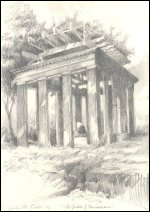

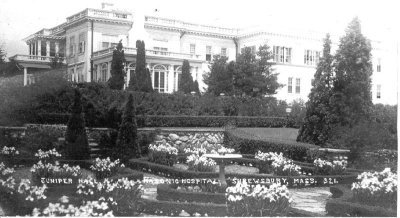
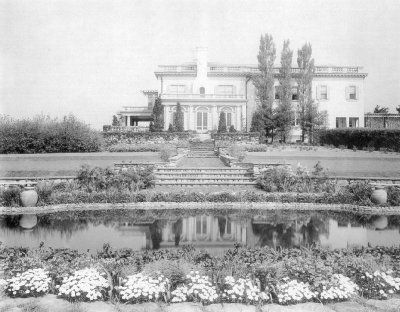
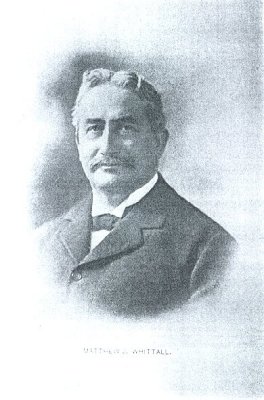
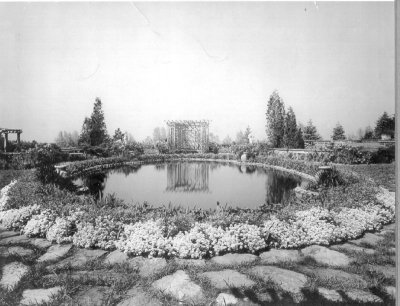
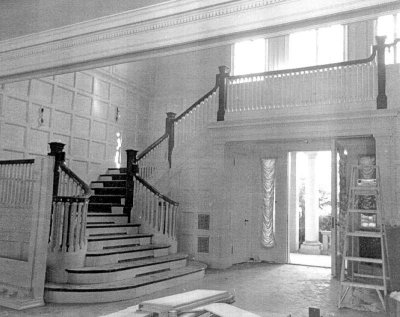 Her meadow where the iris grows wild in the native grasses has attracted many interested visitors, in the blooming season.
Her meadow where the iris grows wild in the native grasses has attracted many interested visitors, in the blooming season.